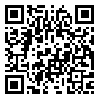Volume 2, Issue 4 (December 2017)
J Environ Health Sustain Dev 2017, 2(4): 388-398 |
Back to browse issues page
Download citation:
BibTeX | RIS | EndNote | Medlars | ProCite | Reference Manager | RefWorks
Send citation to:



BibTeX | RIS | EndNote | Medlars | ProCite | Reference Manager | RefWorks
Send citation to:
Nozari M, Ansari Shiri M, Samaei M R, Shirdarreh M R, Gholamnejad A, Rezaeian S. The Epidemiological Study of Cutaneous Leishmaniasis in Patients Referred to Skin Lesions in Dashtestan District, Bushehr Province, Iran in 2013-2014. J Environ Health Sustain Dev 2017; 2 (4) :388-398
URL: http://jehsd.ssu.ac.ir/article-1-95-en.html
URL: http://jehsd.ssu.ac.ir/article-1-95-en.html
Majid Nozari 
 , Marziyeh Ansari Shiri
, Marziyeh Ansari Shiri 
 , Mohammad Reza Samaei *
, Mohammad Reza Samaei * 
 , Mohammad Reza Shirdarreh
, Mohammad Reza Shirdarreh 
 , Ali Gholamnejad
, Ali Gholamnejad 
 , Shahab Rezaeian
, Shahab Rezaeian 


 , Marziyeh Ansari Shiri
, Marziyeh Ansari Shiri 
 , Mohammad Reza Samaei *
, Mohammad Reza Samaei * 
 , Mohammad Reza Shirdarreh
, Mohammad Reza Shirdarreh 
 , Ali Gholamnejad
, Ali Gholamnejad 
 , Shahab Rezaeian
, Shahab Rezaeian 

Department of Environmental Health Engineering, School of Health, Shiraz University of Medical Sciences, Shiraz, Iran.
Abstract: (3917 Views)
Introduction: Cutaneous leishmaniasis can lead to the loss of time, labor force, significant treatment costs and psychological problems. Also, cutaneous leishmaniasis is considered as an important health problem in Iran. This study was aimed to investigat the status of cutaneous leishmaniasis in Dashtestan district.
Materials and Methods: This cross-sectional and descriptive-correlational survey was performed on all confirmed leishmaniasis cases (86 person) following up in Dashtestan district health care centers during 2013-2014. Patient’s general information such as age, sex, geographical region, number and site of ulcer, as well as the month and season of incidence were registered and analyzed by SPSS ver.24. All ethical issues were also addressed.
Results: During 2013, the maximum percent frequency of the incidence of cutaneous leishmaniasis was related to the age-group of 0-4 years (41.9%) and during 2014, was related to the age group of 15-24 years (30.2%). During 2013 and 2014, the incidence of cutaneous leishmaniasis was higher in males than in females and the face was the most common site of the ulcer. During 2013 and 2014, autumn and winter had the most seasonal incidence and most of the cases were observed during September and January, respectively.
Conclusion: Based on the study results, cutaneous leishmaniasis is high endemically in Dashtestan district. Therefore, control measures such as education, optimizing the environment and the application of appropriate coating for exposed age groups, especially children and young people are essential.
Materials and Methods: This cross-sectional and descriptive-correlational survey was performed on all confirmed leishmaniasis cases (86 person) following up in Dashtestan district health care centers during 2013-2014. Patient’s general information such as age, sex, geographical region, number and site of ulcer, as well as the month and season of incidence were registered and analyzed by SPSS ver.24. All ethical issues were also addressed.
Results: During 2013, the maximum percent frequency of the incidence of cutaneous leishmaniasis was related to the age-group of 0-4 years (41.9%) and during 2014, was related to the age group of 15-24 years (30.2%). During 2013 and 2014, the incidence of cutaneous leishmaniasis was higher in males than in females and the face was the most common site of the ulcer. During 2013 and 2014, autumn and winter had the most seasonal incidence and most of the cases were observed during September and January, respectively.
Conclusion: Based on the study results, cutaneous leishmaniasis is high endemically in Dashtestan district. Therefore, control measures such as education, optimizing the environment and the application of appropriate coating for exposed age groups, especially children and young people are essential.
Type of Study: Original articles |
Subject:
Special
Received: 2017/07/27 | Accepted: 2017/10/20 | Published: 2017/12/19
Received: 2017/07/27 | Accepted: 2017/10/20 | Published: 2017/12/19
| Rights and permissions | |
 |
This work is licensed under a Creative Commons Attribution-NonCommercial 4.0 International License. |




